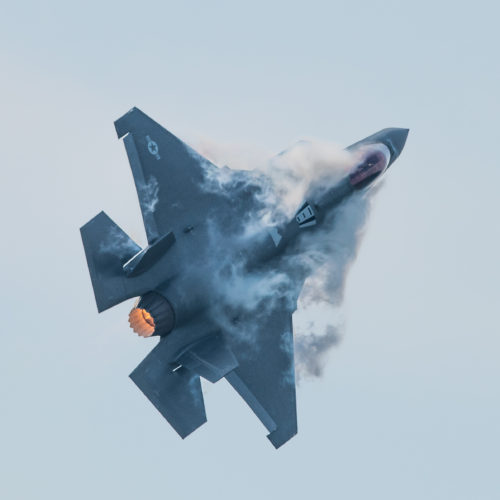The Royal Thai Air Force’s (RTAF) bid to procure the highly sought-after F-35 fighter jets has been met with disappointment as the United States has declined to sell them to Thailand. The decision comes as a result of various factors, including training and technical requirements, according to RTAF spokesperson, ACM Prapas Sornchaidee.

In a statement released by the RTAF, it was revealed that the sale of the fifth-generation F-35 stealth fighter jets was subject to stringent conditions, such as time constraints, technical specifications, and maintenance compatibility. Unfortunately, the United States was unable to meet these criteria and therefore could not offer the sale to Thailand.
The F-35, known for its advanced capabilities and stealth features, is considered a sensitive export and is exclusively sold to the United States’ closest allies in the Asia-Pacific region, including Australia, Japan, South Korea, and Singapore. Thailand, designated as a Major Non-NATO Ally by the United States in 2003, had set aside a substantial budget of $407.68 million to replace its aging fleet of mostly U.S.-made F-5 and F-16 fighters. Initially, up to eight Lockheed Martin F-35A jets were identified as the desired replacement.
However, due to the complex requirements associated with the F-35 program, the sale could not proceed. The procurement process for these fifth-generation fighter jets involves an extensive timeline of approximately 10 years, during which the buying country must establish specific infrastructure, training programs, and security systems tailored to the unique technical and operational characteristics of the F-35s. Furthermore, the logistics, inventory, and management systems of the F-35A differ significantly from those of the F-16 jets, making it impractical for the two types of fighters to share infrastructure.
Despite this setback, the United States has proposed alternative options to the RTAF. The U.S. authorities have suggested the procurement of upgraded versions of its fourth-generation fighter jets, including the F-16 Block70 and F-15EX models. These alternatives can be delivered more promptly and still meet the operational requirements of the Royal Thai Air Force.
ACM Prapas emphasized the urgent need for the RTAF to replace its aging F-16 fleet, which is nearing decommissioning. The Thai government had previously approved the purchase of four F-35A jets with a planned commencement in the upcoming fiscal year. However, if the request is officially denied, the air force will have to return the advance payment that was approved by the House of Representatives.
While the F-35 acquisition is no longer an immediate possibility, the RTAF is actively considering other options. Among them is the potential purchase of another fleet of Gripen fighter jets from Sweden’s Saab AB. Thailand already operates 12 JAS-39 Gripen fighters, but unfortunately lost one aircraft in a previous crash.
The United States and Thai authorities intend to engage in discussions to explore necessary preparations for a future supply of F-35A jets to the RTAF. Despite the current setback, both sides remain committed to maintaining strong defense partnerships and exploring alternatives that align with Thailand’s national security interests.
For more information, hit the Source below